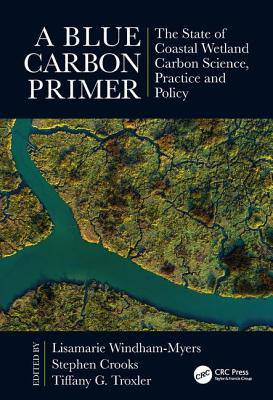
- Retrait gratuit dans votre magasin Club
- 7.000.000 titres dans notre catalogue
- Payer en toute sécurité
- Toujours un magasin près de chez vous
- Retrait gratuit dans votre magasin Club
- 7.000.0000 titres dans notre catalogue
- Payer en toute sécurité
- Toujours un magasin près de chez vous
A Blue Carbon Primer
The State of Coastal Wetland Carbon Science, Practice and Policy
Description
Key features:
Blue Carbon has emerged as a term that represents the distinctive carbon stocks and fluxes into or out of coastal wetlands such as marshes, mangroves, and seagrasses. The Blue Carbon concept has rapidly developed in science literature and is highly relevant politically, as nations and markets are developing blue carbon monitoring and management tools and policies. This book is a comprehensive and current compendium of the state of the science, the state of maps and mapping protocols, and the state of policy incentives (including economic valuation of blue carbon), with additional sections on operationalizing blue carbon projects and 7 case studies with global relevance.
Spécifications
Parties prenantes
- Editeur:
Contenu
- Nombre de pages :
- 550
- Langue:
- Anglais
- Collection :
Caractéristiques
- EAN:
- 9781498769099
- Date de parution :
- 06-12-18
- Format:
- Livre relié
- Format numérique:
- Genaaid
- Dimensions :
- 183 mm x 254 mm
- Poids :
- 1088 g

Les avis
Nous publions uniquement les avis qui respectent les conditions requises. Consultez nos conditions pour les avis.





